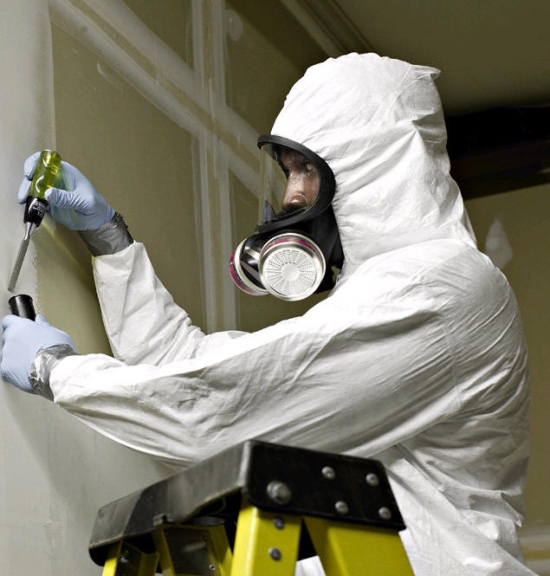Anyone involved in the construction industry, or with a knowledge of commercial property ownership, will have been warned of the risk of asbestos. Once a hugely common building material, the compound was banned after being found to contain significant health risks when fibres were inhaled – meaning that both residential and commercial properties nationwide were stripped back to the bricks as a means of ensuring the safety of residents, tenants and consumers.

Certain types of cancer and lung conditions have been directly linked to asbestos inhalation over the past few decades, with medical experts estimating that 11 people die from mesothelioma or cancer contracted by asbestos every day. Not surprisingly large chains in the UK are now extremely careful to distance themselves from any hint of the poisonous material, often going to great expense to make sure any traces of asbestos are removed safely during refurbishment work on their stores.
However, in 2011 popular retailer Marks and Spencer was fined a total of £1 million after asbestos removal guidelines were found to have been breached during the 2006 refurbishment of their Reading store. The fine was set after the Health and Safety Executive took Marks and Spencer to court, claiming that the chain had put their workers at risk by failing to follow explicit instructions from the construction firm heading the project.
Now it has emerged that the board of Marks and Spencer had received a warning over improper asbestos removal more than ten years before they were handed the fine by Judge Christopher Harvey Clark.
Health and safety manager William Wallace, who was contracted to the 1998 refurbishment of Marks and Spencer’s London Marble Arch store, claims that he notified then-chairman Sir Richard Greenbury of a number of breaches logged during the construction period. Instances of cladding being stripped by a sledgehammer and broken asbestos being left unsupervised in the open air were cited as a cause for concern by many workers on site, with one contractor stating that he should “legally report” cases where corners had been cut.
While Mr Wallace does acknowledge that he was able to voice his concerns to senior managers three days after the letter was received, he does not believe that lessons were learned from the experience despite a full investigation being initiated. Had the board kept the Marble Arch experience in mind, perhaps breaches in the Reading store would not have occurred in the first place.
Mr Wallace said; “There were minefields, asbestos minefields for want of a better expression.
“You could not have guaranteed the safety of anybody, the workers, the staff, the customers: you could not have given a 100 per cent guarantee that those people were safe.”
Of course, Marks and Spencer is by no means the only retailer to have been fined for failing to adhere to asbestos removal guidelines since the material was found to pose a significant health risk. Others include House of Fraser’s Birmingham branch in 1997, the Co-op in Manchester, 2007, and most recently John Lewis in Edinburgh in 2008.
However, the fact that asbestos is still posing a problem in the present day is something of a concern. While newer builds no longer use asbestos in any part of the construction process, conversions and refurbishments of existing properties come with some risk.
And, as the effects of asbestos inhalation can take up to 40 years to manifest physically, there is a real possibility that breaches of safety guidelines will continue to be felt well into the future.
Steve Rowe, a board member for Marks and Spencer, claims that a full investigation was launched upon hearing Mr Wallace’s concerns.
He says; “On the face of it these allegations sound worrying, but our team at the time 15 years ago thoroughly investigated them on the day.
“They thoroughly investigated them some three months afterwards and again I’ve spoken to those individuals and could find no case whatsoever to say any member of staff or any member of the public was put at risk.”
However, Mr Rowe does concede that more could have been done in the Reading refurbishment to protect consumers and workers from the risk of asbestos.
He continues; “We have a very good policy which the judge described as sensible and practical, but implementation of the policy wasn’t good at Reading. We are very sorry about that.”
Do you think that any business failing to comply with health and safety guidelines in the case of asbestos removal should be punished harshly, or do you believe that the £1 million fine was sufficient in the case of Marks and Spencer?
Should an independent board, perhaps a subsidiary of the Health and Safety Executive, oversee any refurbishment projects in older buildings in case further breaches occur, or can companies be trusted to keep the welfare of consumers and workers at the forefront of their minds?
Previous Post
Stricken Jessops Saved from Fire by TV Dragon